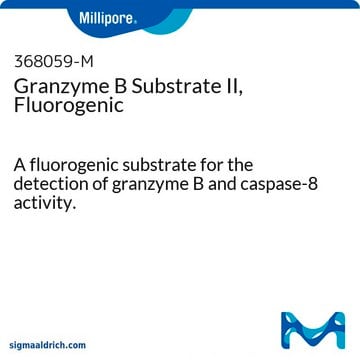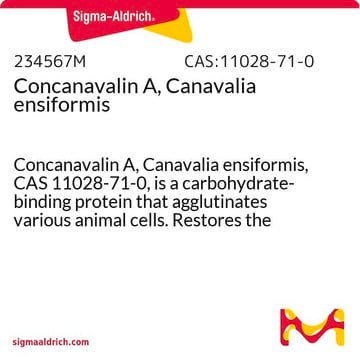C9705
Concanamycin A
≥70% (HPLC), crystals, vacuolar-type v-ATPase inhibitor
Synonyme(s) :
Folimycin
Sélectionner une taille de conditionnement
Sélectionner une taille de conditionnement
About This Item
Produits recommandés
Nom du produit
Concanamycin A, ≥70% (HPLC)
Niveau de qualité
Essai
≥70% (HPLC)
Forme
solid film
Spectre d'activité de l'antibiotique
viruses
Mode d’action
enzyme | inhibits
Température de stockage
−20°C
Chaîne SMILES
CCC1C(O)C(C)C\C(C)=C\C=C\C(OC)C(OC(=O)\C(OC)=C\C(C)=C\C(C)C1O)C(C)C(O)C(C)[C@]2(O)C[C@@H](O[C@H]3C[C@@H](O)[C@H](OC(N)=O)[C@@H](C)O3)[C@H](C)C(O2)\C=C\C
InChI
1S/C46H75NO14/c1-13-16-34-28(7)37(58-38-22-33(48)43(31(10)57-38)60-45(47)53)23-46(54,61-34)30(9)41(51)29(8)42-35(55-11)18-15-17-24(3)19-26(5)39(49)32(14-2)40(50)27(6)20-25(4)21-36(56-12)44(52)59-42/h13,15-18,20-21,26-35,37-43,48-51,54H,14,19,22-23H2,1-12H3,(H2,47,53)/b16-13+,18-15+,24-17+,25-20+,36-21-/t26?,27?,28-,29?,30?,31-,32?,33-,34?,35?,37-,38+,39?,40?,41?,42?,43-,46+/m1/s1
Clé InChI
DJZCTUVALDDONK-LWLXYWDNSA-N
Vous recherchez des produits similaires ? Visite Guide de comparaison des produits
Catégories apparentées
Description générale
Application
Actions biochimiques/physiologiques
Mention d'avertissement
Danger
Mentions de danger
Classification des risques
Acute Tox. 1 Inhalation - Acute Tox. 2 Dermal - Acute Tox. 2 Oral - Eye Irrit. 2
Code de la classe de stockage
6.1A - Combustible acute toxic Cat. 1 and 2 / very toxic hazardous materials
Classe de danger pour l'eau (WGK)
WGK 3
Point d'éclair (°F)
Not applicable
Point d'éclair (°C)
Not applicable
Équipement de protection individuelle
Eyeshields, Faceshields, Gloves, type P2 (EN 143) respirator cartridges
Faites votre choix parmi les versions les plus récentes :
Certificats d'analyse (COA)
Vous ne trouvez pas la bonne version ?
Si vous avez besoin d'une version particulière, vous pouvez rechercher un certificat spécifique par le numéro de lot.
Déjà en possession de ce produit ?
Retrouvez la documentation relative aux produits que vous avez récemment achetés dans la Bibliothèque de documents.
Les clients ont également consulté
Active Filters
Notre équipe de scientifiques dispose d'une expérience dans tous les secteurs de la recherche, notamment en sciences de la vie, science des matériaux, synthèse chimique, chromatographie, analyse et dans de nombreux autres domaines..
Contacter notre Service technique














